The Seasonic PRIME Titanium PSU (650W, 750W, 850W) Review: Mythical Performance
by E. Fylladitakis on April 7, 2017 9:00 AM ESTExternal Appearance
The three Seasonic PRIME PSUs that we are reviewing today are almost identical physically, sharing the exact same design and proportions. One can only tell the difference between the models from either the sticker with the electrical specification of the PSU that is found at the top of the chassis, or from the number of connectors at the front side of the units. Do note that the chassis is 170 mm long, which is a bit longer than that of a typical ATX PSU and might be incompatible with some cases, especially ultra-compact designs.
Seasonic is trying to have the PRIME units aesthetically standing out of the crowd mainly by adding chrome parts on the sides and bottom of the chassis. Aesthetics are a subjective matter but we believe that the designer made the PRIME units a bit too shiny, when obviously the concept was to have them looking classy. The sides of the chassis are embossed, with a small vent opening that faces the rear of the unit. These vents are insignificantly small and their direction suggests that they are most likely just decorative elements rather than actual thermal improvements.
The rear side of the PSUs is perforated, with an elongated honeycomb pattern that has been optimized for reduced air drag (i.e. noise). There is a typical on/off switch next to the AC cable connection, and also a push button that turns the hybrid fan mode on or off. With the setting on, the fan will not start until the thermal control circuit defines that it is necessary for the cooling needs of the unit.
The front side of the PSUs are littered with the numerous connectors for their modular cables. Each unit has a different number of connectors that corresponds exactly to the number of cables they come with. The connectors are grouped into three categories; one just for the ATX cable, one for the Molex/SATA cables and one for the PCI-E and CPU cables. All of the PCI-E/CPU connectors are compatible with both of the CPU and PCI-E cables.
Internal Design
All three of the units that we are reviewing today are using the same exact fan, the Hong Hua HA13525M12F-Z. It initially appears to be a common 135 mm fan but has a fluid dynamic bearing (FDB) engine, which combines the low noise operation of the sleeve bearing with the longevity of ball bearing engines. The fan has a maximum rotational speed of 1800 RPM.
Seasonic is the designer and a manufacturer that actually also supplies their products to other brands, so there is no hidden OEM behind the PRIME Titanium units, they are entirely of their own design and production. The three PRIME Titanium units that we are reviewing today are also sharing the same exact internal design. As a matter of fact: many of the components are identical, with the only actual difference being the rating of some of the primary components. The heatsinks are identical, as are most of the secondary side capacitors.
The secondary capacitors are either supplied by Nippon Chemi-Con and Nichicon (Solid state), or Nippon Chemi-Con and Rubycon (electrolytic). The filtering stage also is identical between the three units and consists of six Y capacitors, three X capacitors and two filtering inductors. A surge suppressing MOV is also present. All three units are even using the same two primary conversion bridges, which are comically oversized for the power requirements for any of the three units. The two bridges in each of the units could, in theory, handle up to 4.5kW with a mere 90V AC input. Differences occur with the two APFC capacitors at the primary side: the 650W model is using 2×400V/470μF capacitors, the 750W model one uses 400V/450μF plus one 400V/560μF, and the 850W model uses one 400V/470μF plus one 400V/680μF.
Seasonic PRIME Titanium 650W - Internal View
Technologically, the topology of the PRIME units is not alien by any of today’s standards. The primary inversion stage is a full bridge supported by an LLC resonant converter, and the secondary conversion stage is a synchronous rectifier that generates the 12V line, with DC-to-DC circuits for the secondary voltage lines. Seasonic managed to reach 80Plus Titanium efficiency standards simply by the proper selection of high quality active parts that have minimal thermal losses and cooperate well with each other. The flip side of this is the cost, which we will get to later.
Seasonic PRIME Titanium 750W - Internal View
Seasonic PRIME Titanium 850W - Internal View


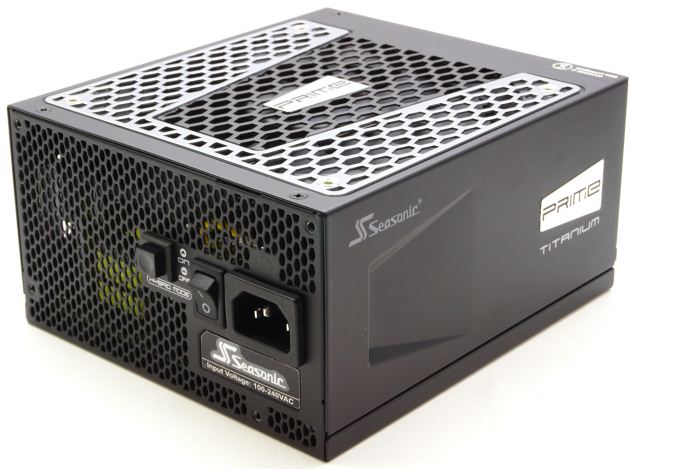
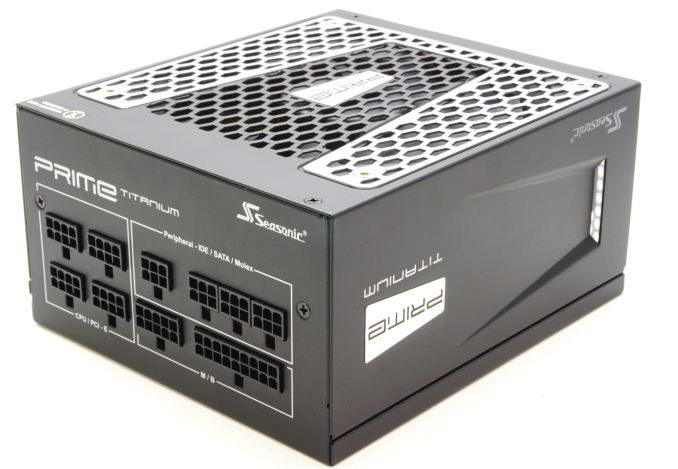
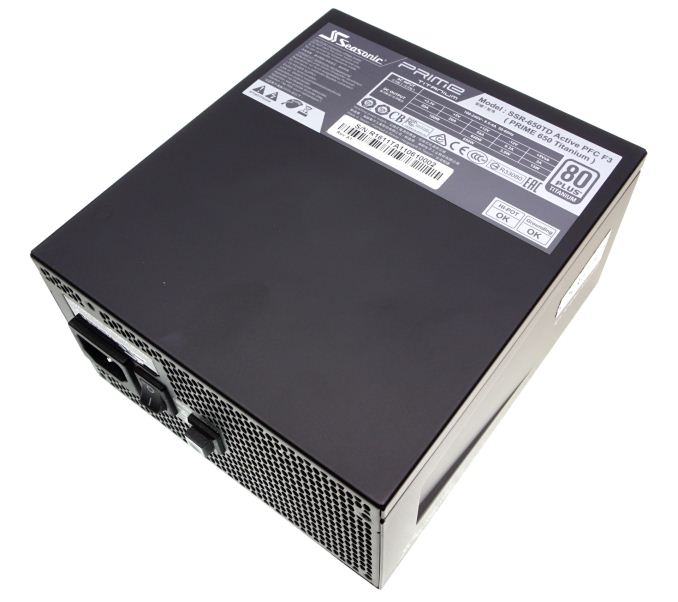

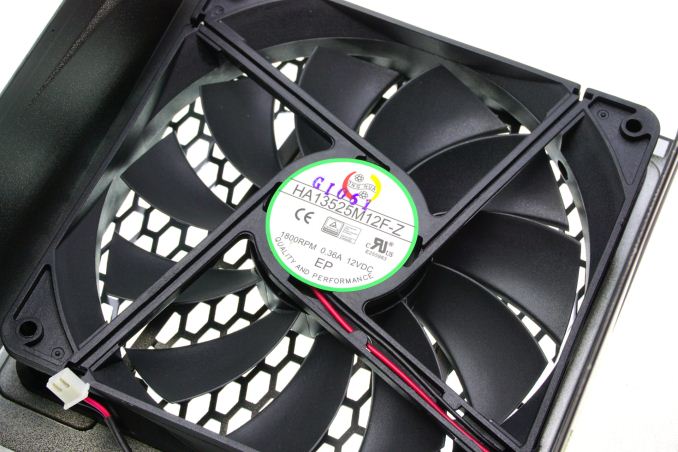
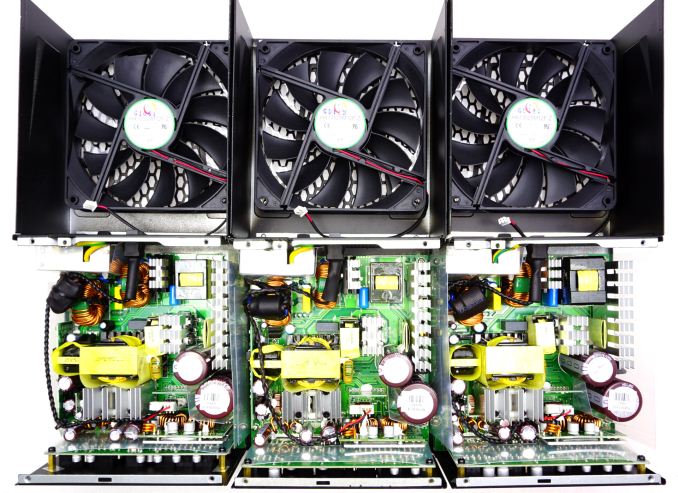
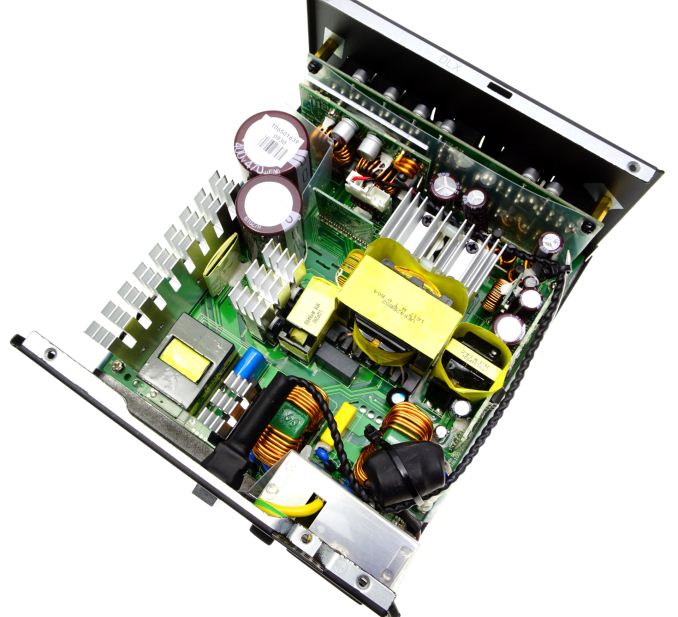
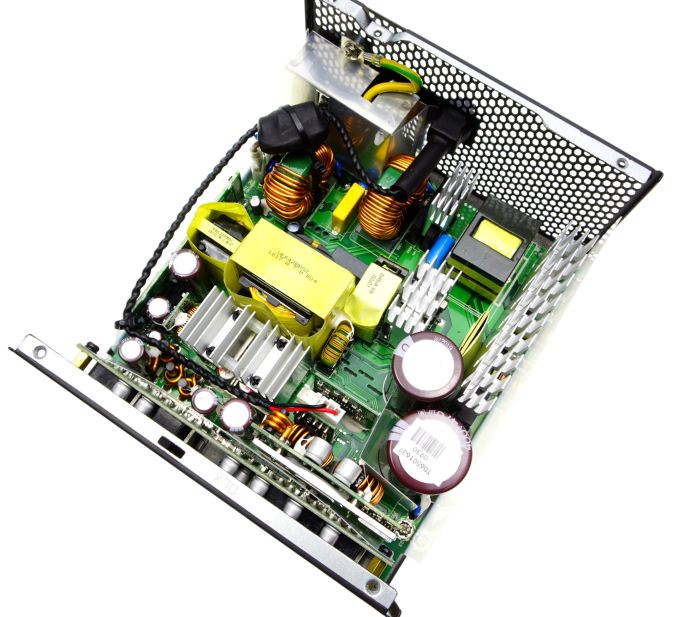
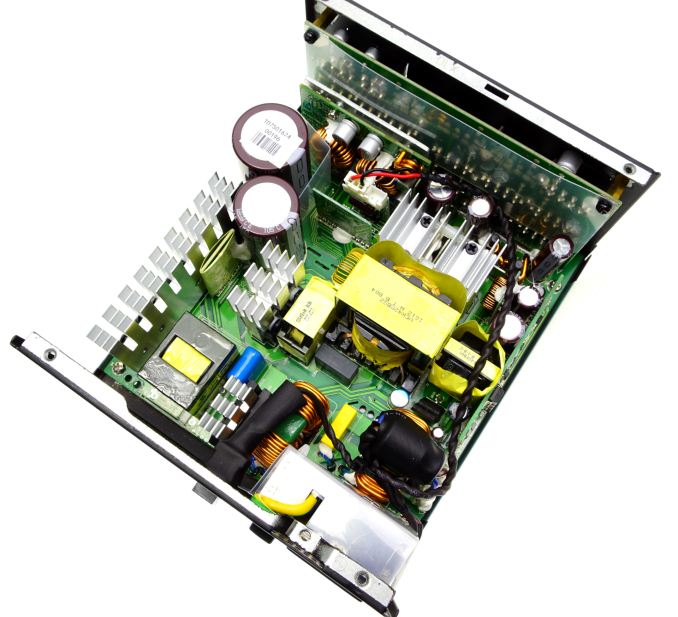
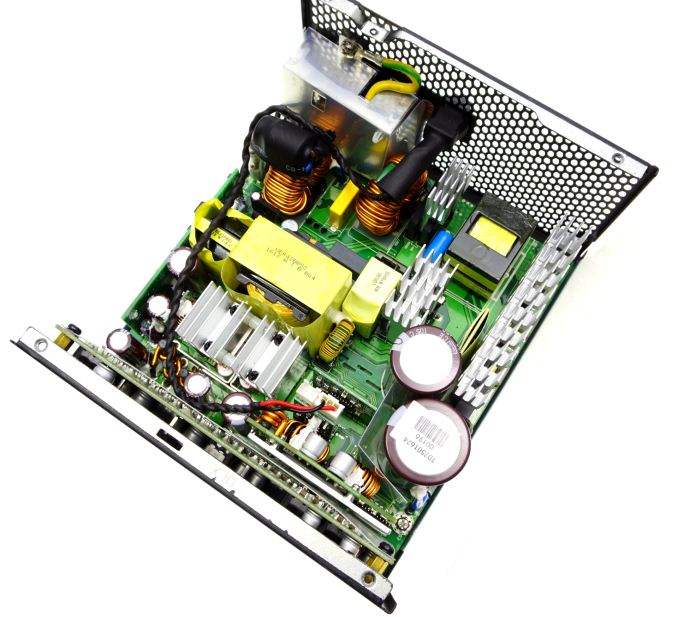
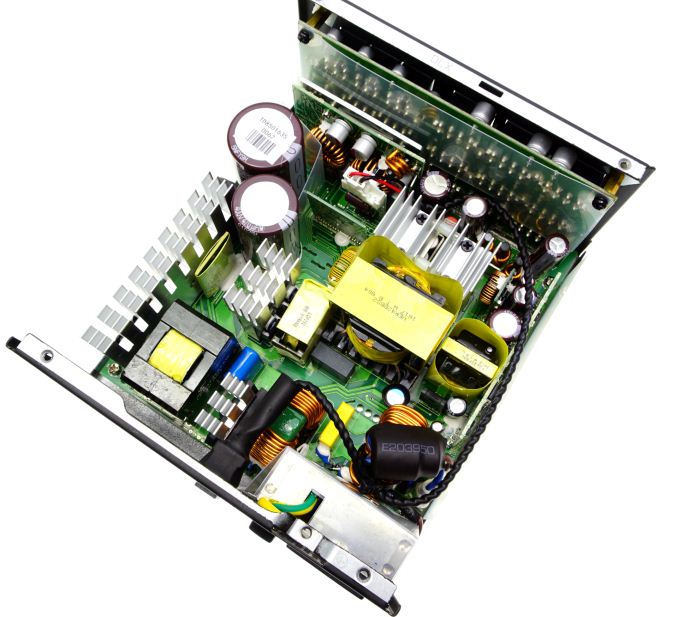
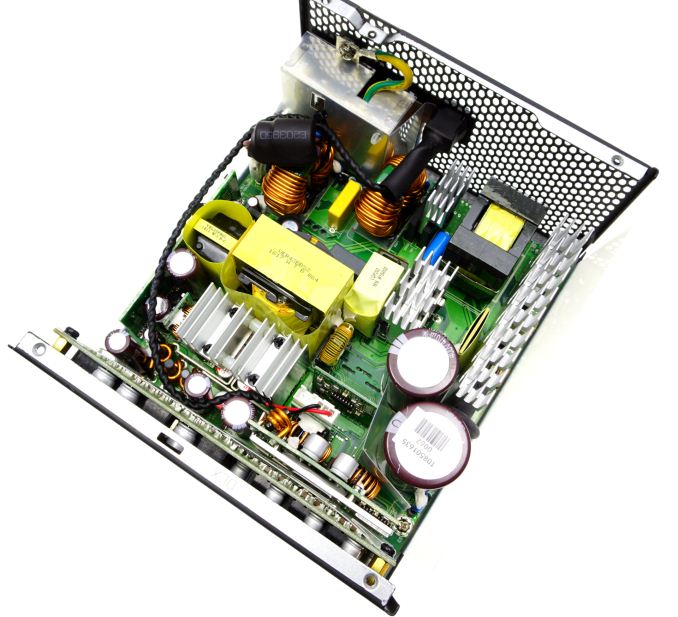








86 Comments
View All Comments
Jammrock - Friday, April 7, 2017 - link
I've had the 650W version since Oct 2016. It's powering an i7-6700K with a GTX 1080. Absolutely zero issues so far. It's quiet and efficient and solid. Can't recommend it enough. If the price tag fits within budget....My only gripe is the motherboard power cable. It's a split cable and kind of annoying to deal with. But then you only need to mess with it once per motherboard upgrade so really it's a very minor issue.
close - Friday, April 7, 2017 - link
Just out of curiosity, why didn't you go for the 750W if the price difference is just $5? Is it for efficiency reasons (less efficient than the 650W at your system's typical load)?Bullwinkle J Moose - Friday, April 7, 2017 - link
Low load efficiency was the reason I purchased a 350 Watt Seasonic SSR-350ST from newegg a few days ago instead of the SS-520GB or the SS-620GB @ B&H Photo for the same price when they were on sale last weekI wish you would cover power supply replacements for Monitors sometime
Had a standard 19 Volt LG power supply crap out last month and the only replacements I could find are basically CRAP
A T-Power replacement actually MELTED within 3 days and became non-functional before it had a chance to burn the house down
Other online stores for Monitor power supplies are complete scams selling more Chinese CRAP instead of the original equipment listed in their ads
I ended up using a VERY Old 120 Watt - 15 Volt Athena Laptop power supply with the T-Power Plug spliced to it's output
It works fine on 19 Volt LG's and cost about $30 around 10 years ago
I was a bit worried about EBay replacements for LG supplies but may need to try that route next time unless anyone knows where to buy "QUALITY" supplies with output current rated "above" what the stock LG's put out
Computer Power supplies are well covered at all the tech sites...
Monitor Supplies are never covered
Why is that?
Bullwinkle J Moose - Friday, April 7, 2017 - link
Modular cable outputs for 2 or 3 computer monitors on the back of these computer power supplies would be nice!I'd buy THAT!
alin - Friday, April 7, 2017 - link
Most laptop psu's are 18-20v. Plenty of them around :)Grimmm - Friday, April 7, 2017 - link
When I was overclocking a Korean IPS I bought a high power brick designed for medical applications on an online industrial parts catalog. Cost a bit, but works perfectly (after swapping the output connector)Jammrock - Tuesday, April 11, 2017 - link
@close - Two reasons. 1) At the time the 750W was more than a $5 difference. I purchased mine >6 months ago. 2) I try to size my PSUs to the load so they hit the peak of efficiency for the majority of my tasks. Granted, the difference is minimal for this particular 80Plus Titanium PSU, but old habits die hard.Sparkyman215 - Friday, April 7, 2017 - link
Wow. I've read a lot of your psu reviews, and I don't think you've used the words 'insanely good', 'unbelievable' - and of course 'mythical'. Even though the price is high, getting one of these and keeping it through upgrades for over a decade is probably a better deal than a lower end psu you have to replace several timesblahsaysblah - Friday, April 7, 2017 - link
It's pretty disheartening to think that they wont be modernizing either the cable layout/connectors or any other aspect of the PSU. It would be great if they could make things smaller/more direct. With the move to a single 12v rail, you would think they would move to single hot/ground per CPU/GPU connector. They have changed the insides a bit. Why there isnt some sort of data/status connector between PSU and MB... At very least to communicate PSU temps, but to add voltage,.. info, instead of all those sense cables.JasperJanssen - Saturday, April 8, 2017 - link
Moving to single wire bundles wouldn't gain you anything, and in fact loses you things. The reason there's 2 or 3 wires in those pcie bundles is current capability -- both for the connector and for the wires. So you still need the same amopunt of copper (actually, slightly more) to do that, if you move to having single wires instead of doubled. but those wires are going to be stiffer and more expensive. In other words, that's a bad idea.And re Status connectors -- while Seasonic could unilaterally add something custom, how many motherboard companies do you think would put a matching connector on? Also, the only thing that even *can* be monitored inside a PSU is the fan speed. That's why they occasionally had a fan speed wire coming out, which you can put on a motherboard fan connector. Only nobody ever used that function.
There just isn't any digital logic inside a PSU to communicate with. Motherboards can monitor voltages just fine on their own through the ATX connector.
(also, changing the connector type requires changing both the power supply *and* the GPU, which is awful.)